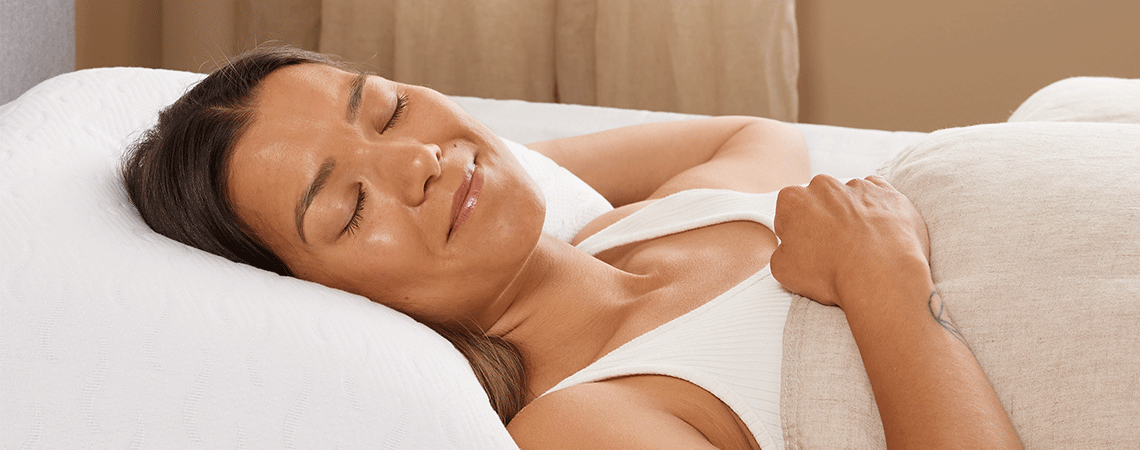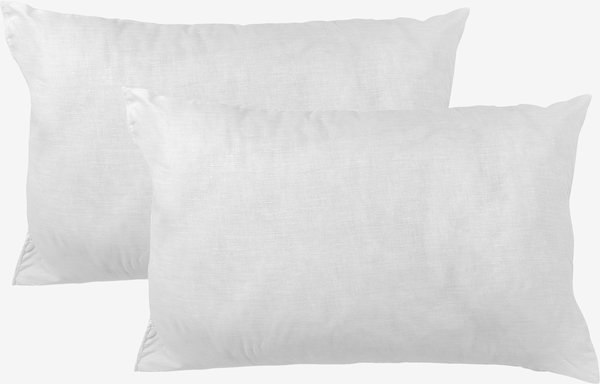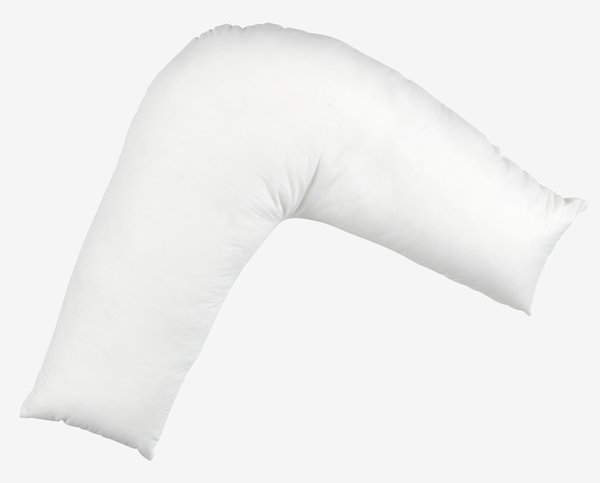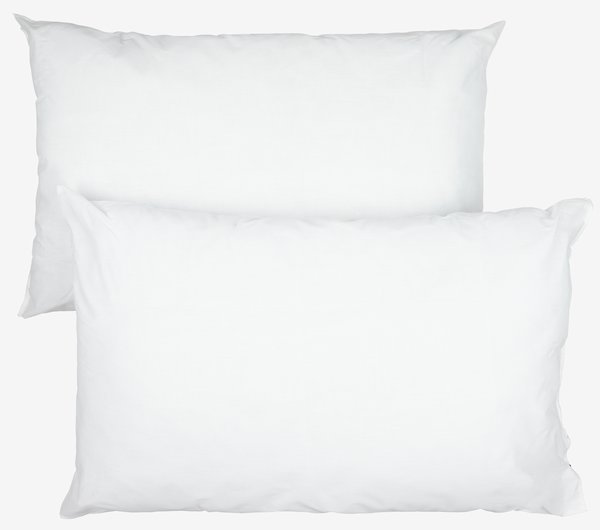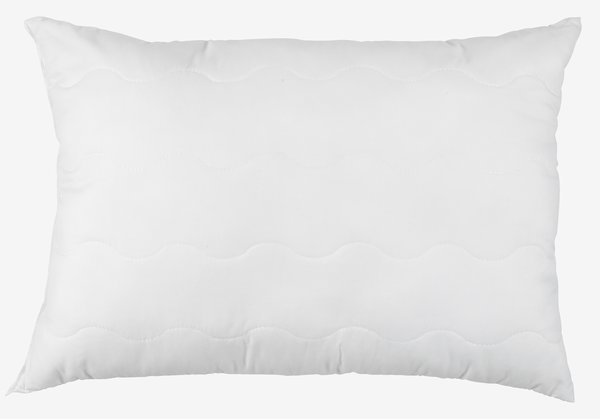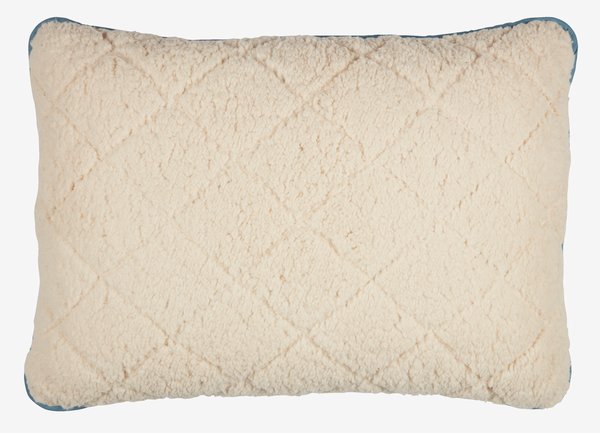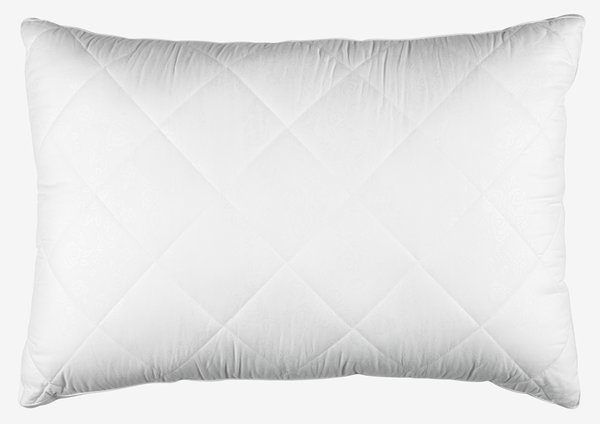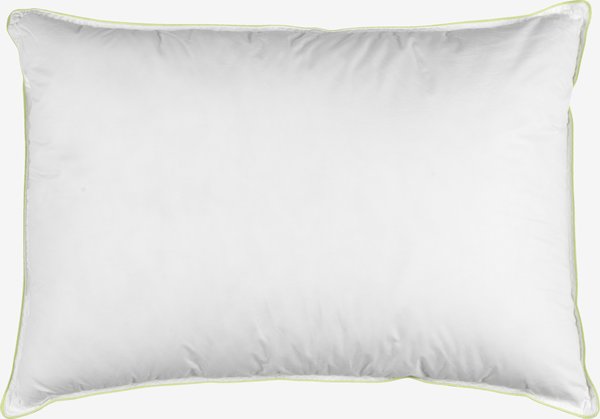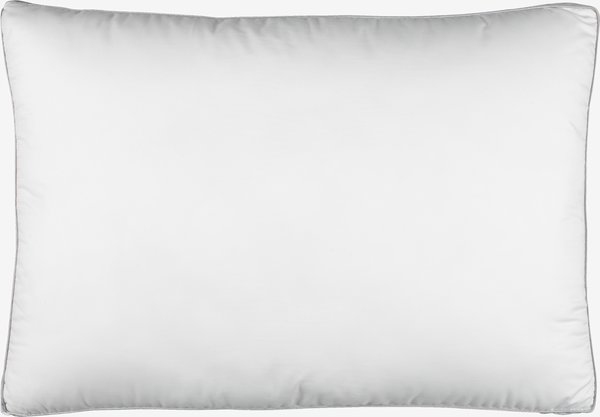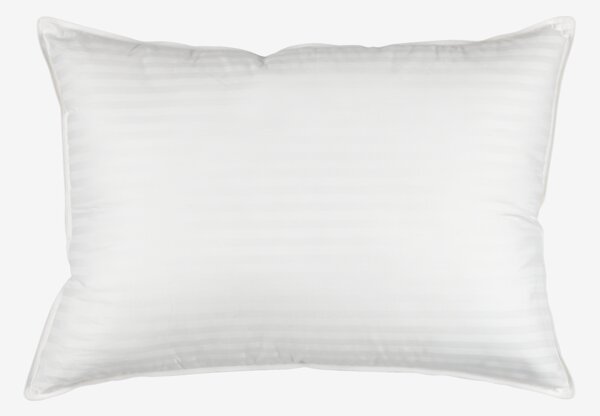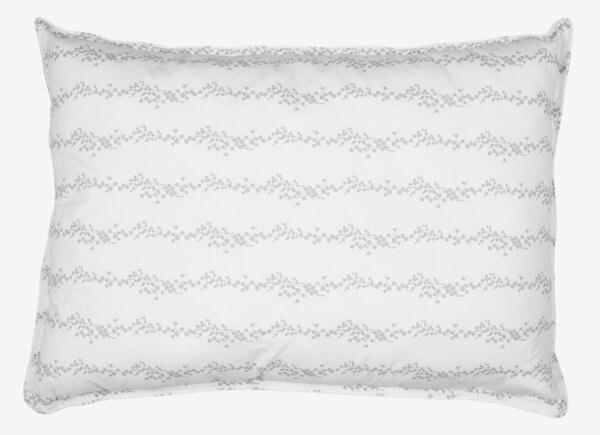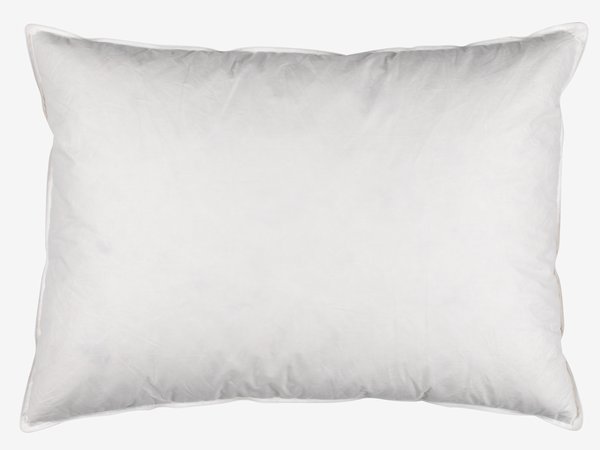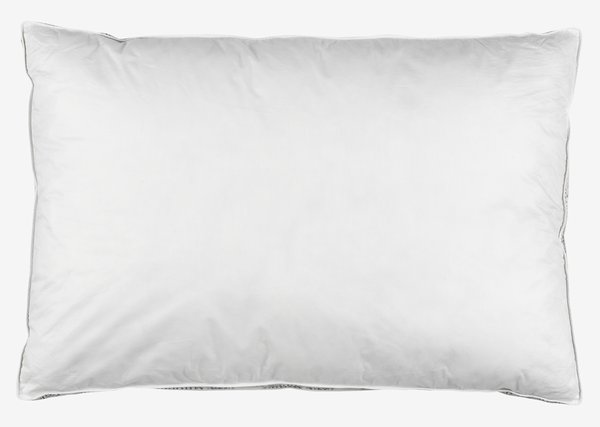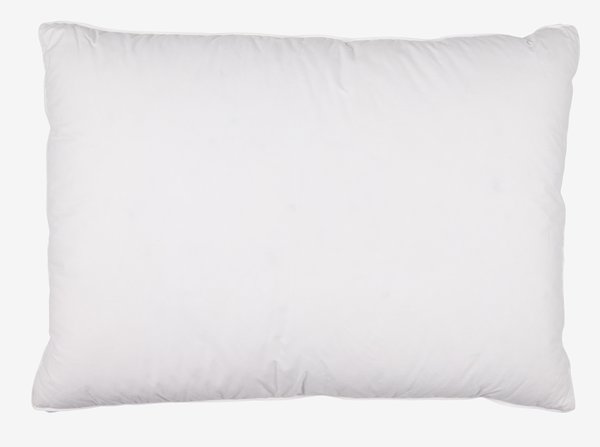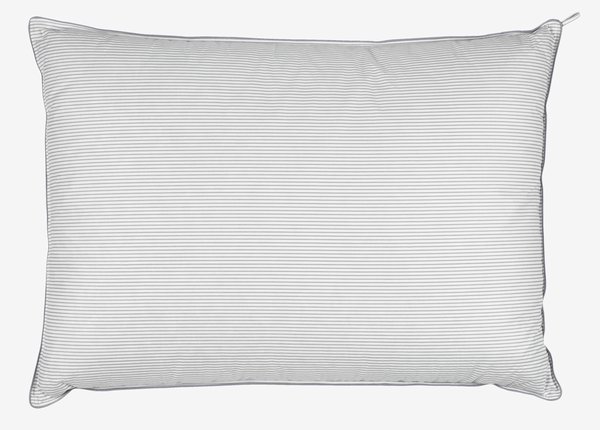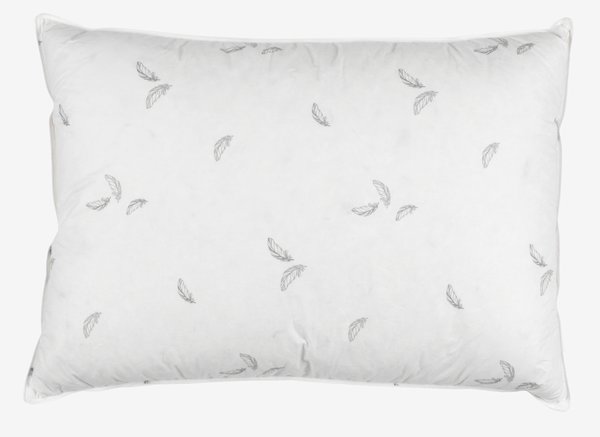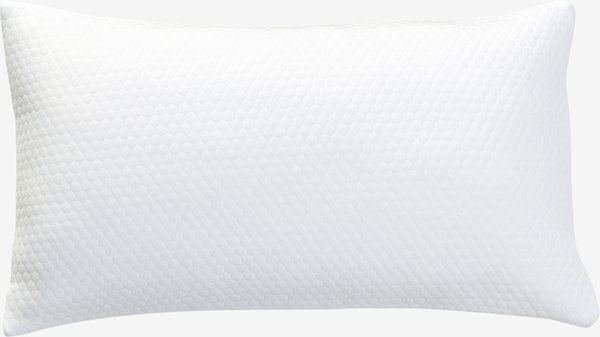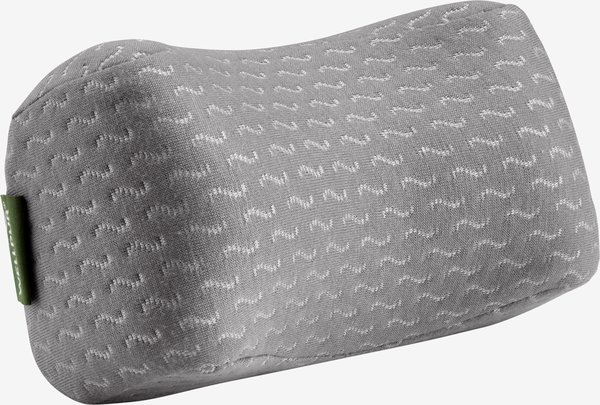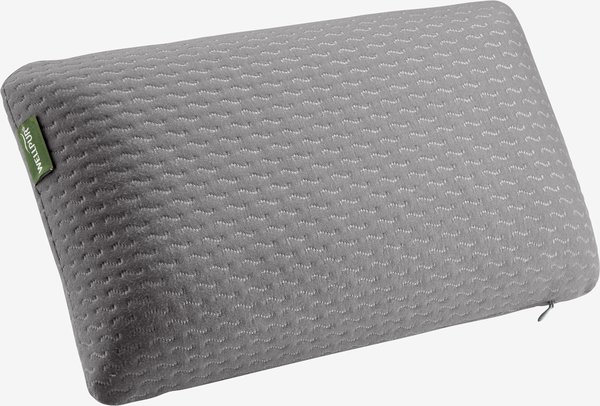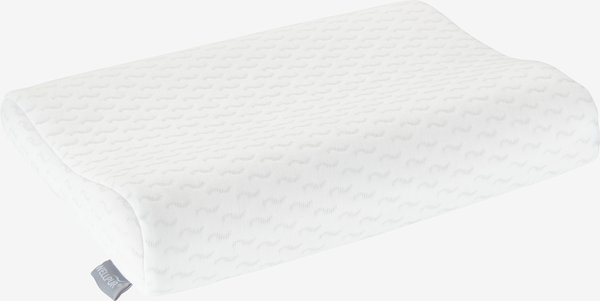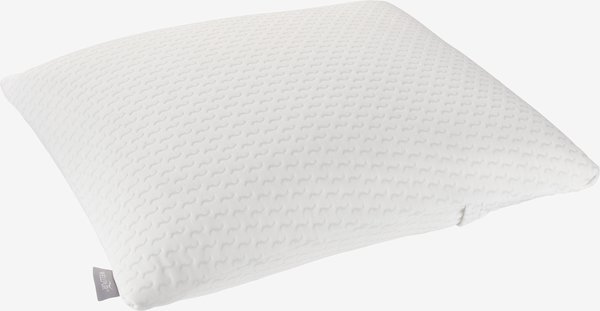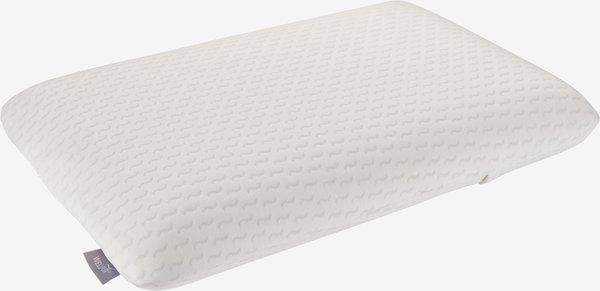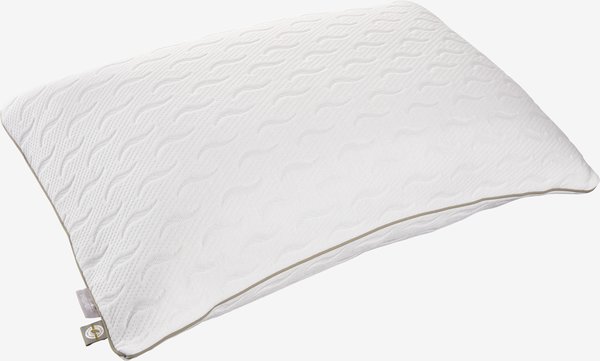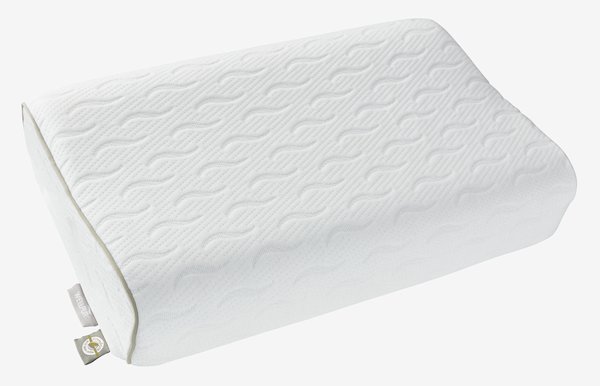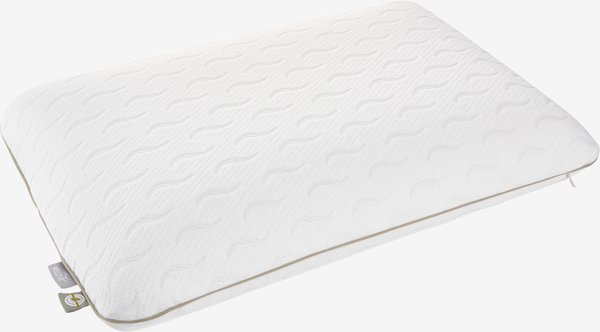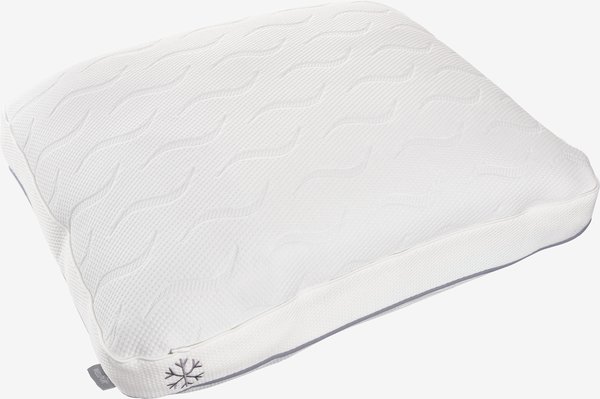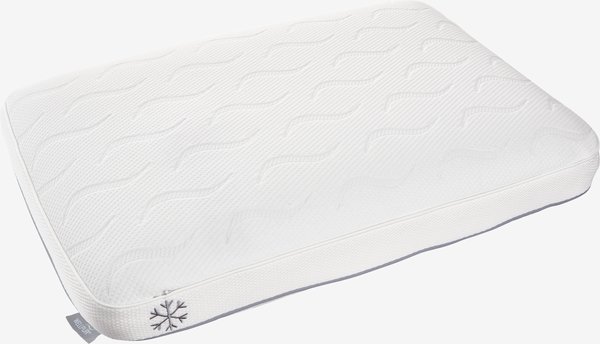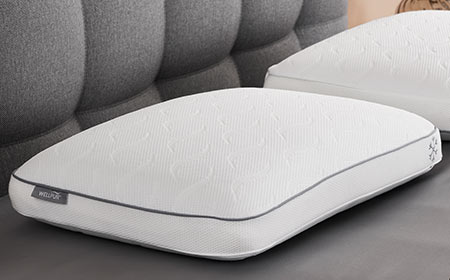Are you in need of a new pillow? In this article, you can learn everything you need to know to find support, comfort and your budget for you. We will cover everything from pillow filling to quality, size, construction, and price. You'll also get concrete advice to help you decide which pillow is the right one for you.
1. What are the different types of pillows?
Before choosing a pillow, you need to know your options. In general, there are three types of pillows to choose from:
- Fibre pillows
- Natural pillows
- Specialist pillows
Although they look similar and are all used for the same purpose, there are significant differences between these three pillow types. The materials used in the pillows can differ, as can their construction and sizes. All these factors will affect the support you will get from your pillow.
Fibre pillows
A fibre pillow contains synthetic filling. In most cases the synthetic filling is fibre down made of polyester. Fibre pillows come in different sizes and constructions, but all are known for being more flexible than, for example, a down pillow. This allows you to easily shape the contents of the pillow and adapt its shape to your preferred sleeping position. Fibre pillows are usually the most budget-friendly pillow type on the market.
Three things you should know about fibre pillows:
- A fibre pillow is a soft and light pillow. This can mean that you will not get quite as much support from a fibre pillow as you would from other pillow types.
- You can easily shape the filling in a fibre pillow so that the pillow fits your sleeping position.
- Fibre pillows are easy to wash, and they dry faster than other types of pillows. This can be a real advantage if you tend to sweat during the night.
A fibre pillow is a good choice if:
You want a soft, affordable, and practical pillow and do not need specific neck and shoulder support.
Natural pillows
A natural pillow is a pillow type that contains natural filling. In most cases the filling consists of down and feathers, but it can also be materials like wool, silk, and kapok. Natural pillows come in different sizes and constructions and are best known for being soft while also providing good support.
Three things you should know about natural pillows:
- The filling is easy to move around, which is helpful if you switch between sleeping on your side and your back.
- Natural pillows and fibre pillows feel similar, but natural filling provides better support than synthetic filling. Natural pillows adapt to the contours of your shoulders and neck. It's primarily the feathers that give natural pillows such good support.
- Down is a natural material that is very good at regulating warmth. A down pillow is a good choice for those who feel hot when they sleep.
A natural pillow is a good choice if:
You want a soft and comfortable pillow that forms itself to the neck and shoulders and provides the support you need to lie in an ergonomically correct position. You tend to feel warm during the night and therefore want a pillow that will help you regulate the temperature of your sleeping environment.
Specialist pillows
A specialist pillow is filled with a type of special filling – typically memory foam or latex. Depending on the filling, a specialist pillow can be a wonderfully ergonomic pillow. Specialist pillows with memory foam provide optimal support and relief for your muscles and joints. A specialist pillow with latex is exceptionally breathable and good at releasing excess heat.
Three things you should know about specialist pillows:
- Specialist pillows are best known for excellent support
- If you choose a specialist pillow with memory foam, you will get the best support possible for sleeping in an ergonomically correct position
- Specialist pillows are particularly well-suited for those who consistently sleep on their sides and thus need extra support and relief around the shoulders and neck
A specialist pillow is a good choice if:
You primarily sleep on your side or back and want a solid pillow with outstanding support that will help you maintain a comfortable and ergonomically correct sleeping position the entire night. A specialist pillow is among the best pillows for side sleepers.
2. Pillow sizes
When it comes to selecting the right size for a pillow, what we're talking about is height.
You can choose between four different pillow heights:
- Low
- Medium
- High
- Extra high
A pillow’s height is determined by its construction, the amount of filling it contains, as well as which filling it contains. Lower pillows have a limited amount of filling and low pillows therefore only provide a limited amount of support. With that said, you can of course find low specialist pillows that will provide adequate support for your neck.
A high pillow has a lot of filling and can thus provide your neck with a lot of support. A high pillow with a large amount of filling will be very good at filling out the space between your head and shoulder when you sleep on your side. This helps side sleepers maintain an ergonomically correct position throughout the night.
The ideal pillow height is largely dependent on your sleeping position. The best pillow for side sleepers will not fit back sleepers or stomach sleepers. The firmness of your mattress should also factor into your pillow choice. See how here:
You sleep on your side on a firm mattress Your pillow should give enough support to fill the space that is created between your head and shoulder when you lie on your side. A firm mattress will generally increase the size of the space that needs to be filled. | |
You sleep on your side on a soft mattress When you lie on a soft mattress, your shoulder sinks into it. The space between your head and shoulder is thus smaller, so you don't necessarily need the support you would get from a high pillow. | |
You sleep on your back If you sleep on your back, you should choose a low pillow – regardless of how soft or firm your mattress is. As a rule of thumb, the softer your mattress is, the lower your pillow should be. If you sleep on your back on a very soft mattress, your pillow should barely have any height at all. |
Read more about how to choose the right height in our guide to pillow sizes.
3. Pillow construction
When it comes to the construction of your new pillow, it's primarily a matter of how many chambers it should have. Pillow chambers are the compartments in a pillow that contains the filling. The chambers play an important role in relation to the pillow's properties.
For the most part, a pillow will have one or three chambers. Multi-chamber pillows often contain a combination of filling, for example, feathers and microfibres, giving the pillow a soft outer layer and a firmer core. Let us take a closer look at how pillows differ based on the number of chambers they have:
- One-chamber pillows: This type of pillow has a single layer of filling. When all filling is contained in the same compartment, it makes it easier to move the filling around and thus shape the pillow to match your needs. One-chamber pillows are generally softer than three-chamber pillows.
- Three-chamber pillows: Pillows with three chambers contain different types of filling in separate layers. The combination of softer filling in the outer layer(s) and a firmer core allow multi-chamber pillows to provide more support than one-chamber pillows. The pillows are therefore fairly solid and the filling can't be moved and shaped as easily as the filling in a one-chamber pillow.
Read more about pillow chambers
4. Pillow durability
As a rule of thumb, you should replace your pillow every two years. You can judge your current pillow's condition by observing the following:
- Firmness: Your pillow has lost its supportive function and feels more limp than fluffy.
- Appearance: Your pillow has developed stains and/or discolouration that are not removed through regular washing.
- Wear and tear: There are holes in the fabric, frayed seams, or just otherwise looks worn.
When your pillow starts losing its firmness, you may no longer be getting the support that you need. You'll have a harder time maintaining an ergonomically correct sleeping position. As a result, you risk developing neck pain, and tension headaches and are more likely to have generally poor sleep.
This is why it's important to pay attention to the condition of your pillow and replace it in good time.
Read more about the durability of pillows
5. Pillow prices
Fibre pillows are generally more affordable compared to other types of pillows. In our assortment, you will find pillows in three quality ranges: BASIC, PLUS, and GOLD. In the table below, you can see the options for all pillow types in each quality range.
Pillow type | BASIC | PLUS | GOLD |
Fibre pillows | |||
Natural pillows | |||
Specialist pillows |
6. Checklist: Which pillow should you choose?
If you started from the top of this article, by now you have read a lot of information about pillows and the various factors that affect your pillow choice. It's a lot to keep track of, so here is a short summary of the most important points:
Pillow support
Do you want a soft pillow without much support? | Choose a fibre pillow. |
Do you want a firm pillow with support? | Choose a specialist pillow or a natural pillow with multiple chambers. |
Do you have extra support needs? | Choose a specialist pillow. |
A pillow for your sleeping position
Do you sleep on your side? | Choose a pillow that has a high or medium height. |
Do you sleep on your back? | Choose a medium pillow. |
Do you sleep on your stomach? | Choose a low pillow (ideally, however, you should try to switch to sleeping on your back or side). |
Do you want a pillow that will help you stop snoring? | Choose a pillow that will help you sleep on your side. Read more about how to prevent snoring |
A pillow for your mattress
Do you sleep on a firm mattress? | Choose a medium or high pillow. |
Do you sleep on a soft mattress? | Choose a medium pillow. |
Do you sleep on your back? | Choose a low or medium pillow, regardless of the firmness of your mattress. |
Pillow construction
Do you consistently sleep on either your side or back? | A stable, multi-chamber pillow is probably the best for you. |
Do you switch between sleeping on your side and your back? | A formable, one-chamber pillow is likely your best bet. |
7. The best pillows
If you are looking to buy a new pillow, you've likely discovered that there are many options from which to choose. At JYSK, we are always ready to advise you on your pillow choice, so you end up with a model that matches your needs, your preferred sleeping position, and your budget.
Don’t forget that your duvet plays a crucial part in your sleep quality. Read our ultimate guide to choosing the right duvet.
